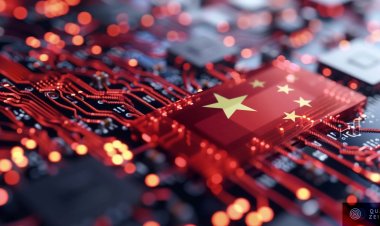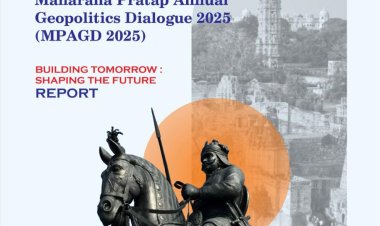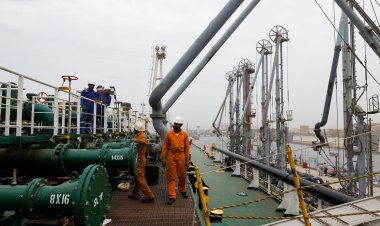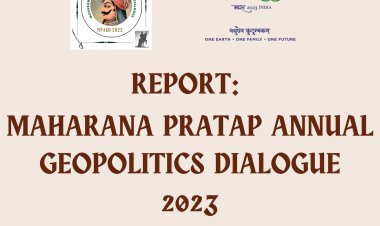The Evolution of China’s Engagement in the Middle East
This paper attempts to evaluate the changes that China’s engagement with the Middle East has undergone with an analysis of its involvement in regional issues, as it tries to emerge as a major player in the international world order.
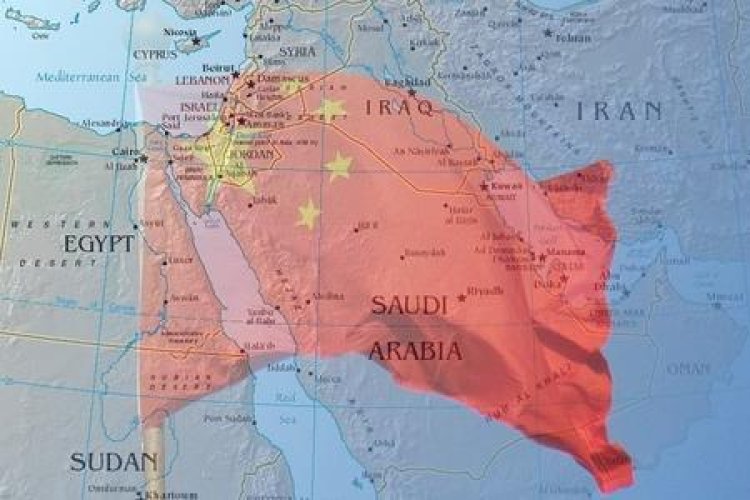
Analysis
By Mehak Johari
China’s foreign policy today is primarily characterized by trade, strategic interests, and economic diplomacy, the biggest example being President Xi Jinping’s ambitious Belt and Road Initiative (BRI) which aims to connect China with Asia, Europe, and Africa through a massive infrastructural project that constructs a vast network of roads, railways, and ports to turn its biggest geographical limitation i.e., a border with 14 nations, into an opportunity. Over the years, China has attempted to establish closer diplomatic ties and gradually increase its influence over other countries. Overall, its foreign policy aims to advance its own economic and political interests. In the Middle East, Chinese foreign policy is primarily guided by the principles of mutual respect, non-interference, maintenance of stability, and win-win cooperation for all parties involved.
Historically, the Chinese have been plagued by concerns over the political instability and conflict in the region, primarily due to its impact on Beijing’s energy security. For instance, when the Houthi insurgents attacked Saudi Aramco’s oil facilities in September 2019, it caused the oil prices to surge 15%, directly affecting the cost of energy supply to China. Since the Middle East is a crucial supplier of oil and natural gas for the heavily energy-dependent China, thus, any disruptions to the flow of these energy resources have the potential to cause drastic economic consequences for the Chinese economy. This Chinese dependence on Middle Eastern oil and gas has enhanced the strategic importance of the region for Beijing in the contemporary scenario.
“We don’t really have the ability to lead in solving Middle East matters, nor have we ever thought about it” was a statement made by Li Weijian of the Shanghai Institute of International Studies in 2015 when referring to Chinese participation in the Middle Eastern region. Cut to 2023, when Iran and Saudi Arabia signed an agreement in Beijing to normalize their relations after almost 7 years of disrupted ties to which Wang Yi, China’s top diplomat, said that “…the success of the talks between Riyadh and Tehran, whose rivalry has shaped politics and trade in the region, was attributed to Xi’s leadership…”. It is in light of these events that this paper attempts to evaluate the changes that China’s engagement with the Middle East has undergone with an analysis of its involvement in regional issues, as it tries to emerge as a major player in the international world order.
Chinese Energy Dependence on the Middle East
The importance of trade for China is indisputable, given that President Xi Jinping proposed the revival of the traditional Silk Road with the announcement of his ambitious Belt and Road Initiative (BRI) in 2013. Similarly, trade also lies at the heart of Chinese relations with Middle Eastern countries. Trade between China and the Middle East is reported to have increased by more than 600% in the past 2 decades, to $330.3 billion in 2021. The strength of their trading relationship is evident by the opening of the first clearing bank to handle transactions in yuan in Qatar in 2015 and even though the dollar is used in the majority of the oil and LNG contracts in the world, China completed its first LNG purchase from UAE in yuan in March 2023.
A majority of their trade is in oil and natural gas to meet China’s energy needs for its rapid economic growth and industrialization. China first became a net importer of crude oil in 1993 and the Middle East soon became an important source of this critical commodity. In 2020, China imported approximately US$176 billion worth of crude oil, out of which 47% was sourced from the Middle East. Saudi Arabia is the largest crude oil supplier for China, with the latter importing 15.9% of its total crude oil from the Kingdom. This is followed by Iraq (from the Middle East) which accounted for about 10.9% of the PRC’s total crude oil imports. Other Middle Eastern countries like Oman, Kuwait, UAE, and Iran also lie among the top 10 suppliers to China.
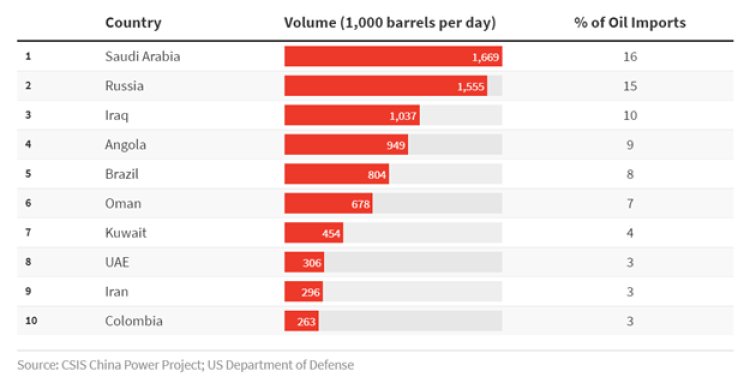
Fig. 1 China’s Top Ten Crude Oil Suppliers (2020)
As for natural gas, China became the world’s largest importer of Liquified Natural Gas (LNG) in 2021. Again, the Middle East emerged as one of the most important sources of this crucial resource. As of 2017, 21% (or 8 million metric tonnes) of China’s LNG imports came from Qatar, the world’s largest exporter of LNG.
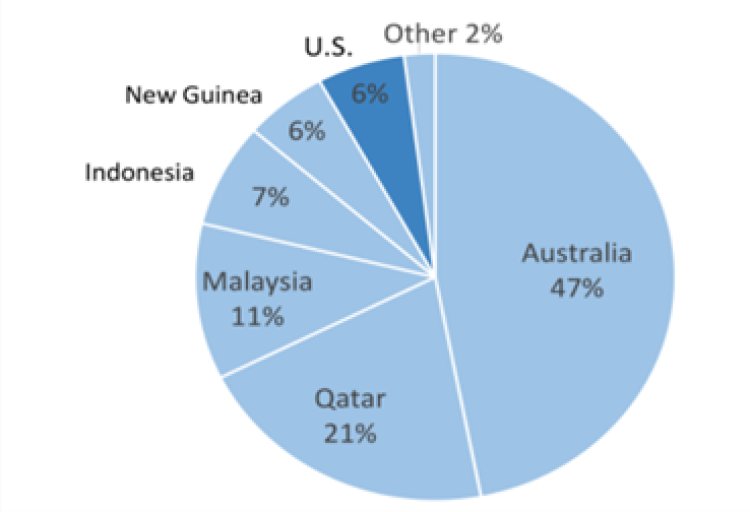
Fig. 2 LNG Supplies by source, 2017 (Data: EIA, Reuters, and author’s calculations)
The crude oil and LNG from the Middle East travel through some of the most politically unstable regions, narrow straits, and contested waterways before reaching China. 83% of China’s oil imports travel through critical maritime chokepoints which adds to the high energy security concerns for Beijing. China’s reliance on the Middle East for its energy security has far-reaching implications for its foreign policy as well. To ensure a steady flow of oil and natural gas to China, the Dragon has sought to maintain cordial, stable, and neutral political and economic relations with the different regional governments as well as had cautiously avoided being involved in any of the regional conflicts directly. At the same time, it has made significant investments in various infrastructural projects. China’s BRI projects in the Middle East have the potential to help developing and backward countries in the region meet their infrastructural and development needs while also offering new growth opportunities to regional businesses and investors.
China has also signed various long-term oil and gas supply deals with regional governments. These new energy deals include the China Petroleum and Chemical Corporation’s (Sinopec) acquisition of stakes in Qatar’s expansion of North Field East in April 2023. North Field contains the world’s biggest natural gas reserve of which China is already the biggest consumer. This deal would give Sinopec a 5% stake in the equivalent of an 8-million-tonne production complex. In November 2023, China signed a deal with QatarEnergy to supply 4 million tonnes of LNG to China each year, expected to equate to about 6% of China’s total LNG imports of that year. Chinese companies have won contracts from QatarEnergy for 4 LNG vessels as well as for the engineering, procurement, and construction of a new LNG export plant. Chinese companies have also struck deals with Iraq to develop 3 oil-and-gas fields under Baghdad’s aspirations to increase its power production. These deals ensure China of secured access to its foreign sources of energy which is a central feature of its dual circulation strategy and is vital for its growth and development.
China’s Belt and Road Initiative
China has been a driver of infrastructural development in the Middle East, particularly in countries like Iran, Iraq, and Saudi Arabia. The Iran-Pakistan gas pipeline, the China-Pakistan Economic Corridor (CPEC), the Saudi Landbridge project, and the Basra-Aqaba oil pipeline are all projects aimed at enhancing regional connectivity and promoting regional economic growth. China has invested more than US$123 billion into the region between 2013 and 2019. Through these BRI projects, China aspires to not only increase its access to the Middle Eastern markets but also ensure a regular supply of energy resources. Finally, China seeks to create an interdependence through these projects to establish itself as a major player in the region.
Involvement in Regional Conflicts
In recent years, the scope of Chinese engagement with the Middle East has expanded beyond the energy security area to deeper involvement in the region’s political and security affairs. Traditionally, China has followed a non-interventionist approach to regional conflicts to win over regional governments that have detested the U.S.’ stance on human rights, and it has instead focused on building deeper diplomatic ties and economic relations with them. However, lately, it has been trying to strengthen its relationship with key Middle Eastern countries to increase its influence and play a more active role in promoting diplomatic solutions to regional disputes.
Iran and Saudi Arabia
Iran and Saudi Arabia signed an agreement in Beijing in March 2023 to restore their diplomatic relations that were disrupted in 2016. They decided to reopen their embassies and send ambassadors to one another’s countries. The fact that the deal was mediated by China shows that its diplomatic clout is growing in the region. However, China is not the instrumental actor that it appears to be. Much of the hard work behind the agreement was done in the diplomatic offices of Iraq and Oman which hosted a series of talks and peace negotiations between the two Gulf rivals over the last 2 years. However, the reason why China was able to finally conclude the agreement between Iran and Saudi Arabia was because of its influence over Iran. China holds high influence over Iran as was evident when the Iranian President arranged a trip to China even though China had mentioned the three disputed islands in the Gulf in its diplomatic exchanges with the UAE.
Israel- Palestine Conflict
The Israel-Palestinian conflict has been frozen in time for a long time, with limited meaningful dialogue between the two sides since 2009. China and Russia have maintained a neutral stance on the issue, calling for immediate de-escalation, exercising restraint in avoiding further casualties, and urging for a peaceful resolution of the tensions in the region. China even brought the Israel-Palestine conflict to the UNSC forum in its bid to urge the UN to take a greater leadership role in solving global disputes. However, China hasn’t always been this neutral in its stance. During the early years of the People’s Republic of China (PRC), China maintained a pro-Palestinian stance and pushed for Palestinian statehood. It advocated the “two-state system” which implied the establishment of Palestine as an independent state alongside Israel. It even established diplomatic relations with the Palestine Liberation Organization (PLO) in 1965 and officially recognized Palestine as a state in 1988. Yasser Arafat, Chairman of the PLO had once described the PRC as, “the biggest influence in supporting our revolution and strengthening its perseverance”. Since 1965, the PRC has been a consistent supporter of the Palestinian guerrilla organization, providing them with moral and material support.
Despite supporting Palestinian independence and officially opposing the Israeli occupation of its territories, Beijing continued to develop economic, trade, and diplomatic relations with Tel Aviv, to maintain a balanced approach. Sino-Israel economic ties have almost doubled from $9.8 billion in 2011 to $18.2 billion in 2021 while Chinese investments in Israel have increased to $10.6 billion over the same period. It was these good relations with both Israel and Palestine that motivated Beijing to offer its intermediary services to facilitate Israel-Palestine peace talks in 2017. Chinese President Xi Jinping released his ‘Four-Point Proposal’ in 2017 to end the conflict and establish an independent Palestinian state. It included, first, advancing the two-state solution based on the 1967 borders with East Jerusalem as the new Palestinian capital, second, ending the Israeli settlements and preventing violence against civilians, third, promoting international efforts for peace, and fourth, boosting development and cooperation between the conflicting parties. China acknowledges the importance of both Israel and Palestinians in its BRI projects and, thus, it has also proposed a “China-Palestine-Israel tripartite dialogue mechanism” and held various seminars with Israeli and Palestinian politicians, scholars, and peace activists.
In April 2023, China offered to mediate between the Israelis and Palestinians once again which is believed to have wider geopolitical motivations. First, it is believed that China aims to occupy America’s predominant position in the Middle East as the latter gradually withdraws from the region to shift its focus to the Indo-Pacific region under the Biden administration. Second, China wants to highlight the weakness of the United States in its failure to resolve the issue despite its long-time presence in the region. Third, the move earned China the media attention it needed to push forth its narrative of being a peacemaker and a responsible leader. Fourth, it can also be a result of the overconfidence of the Chinese diplomats given “their” success in facilitating the agreement between Iran and Saudi Arabia.
For the Palestinians, the Chinese initiative is long-awaited since they’ve always wanted greater international involvement in the peace negotiations as they believe it would put more pressure on the Israelis which has been impossible under the U.S. presence in the region. As for Israel, it is unlikely to accept Chinese mediation since it prefers to work with its long-time ally, the U.S., and other Western powers.
The world can only wait and see if the Chinese initiative results in any substantial improvement in the region, however, the world is largely sceptical of it given the U.S.’ failure to resolve it. The on-ground realities of the issue have changed significantly since the 1993 Oslo Accords and the two-state solution is no longer a viable option given the complexities of the issue in the region. At the same time, this Chinese initiative is also a gamble for PRC because if China fails, this could undermine its stature and credibility in the region. However, seeing how the Saudis and Houthis decided to meet in Yemen and establish a ceasefire to stop their fighting as well as agreed to a prisoner exchange following the Saudi-Iran deal, there is still hope for China to bring in similar outcomes for the Israelis and the Palestinians, however modest they may be.
Other Areas of Cooperation
China is making significant strides in expanding cooperation with the Middle East region in other sectors as well. These include its maritime and railway infrastructure projects under the BRI framework; the green energy sector where the Middle Eastern countries depend on Beijing for assistance in the construction of their clean energy ecosystems, investments in advanced technologies like 5G, artificial intelligence, and finally, nuclear energy.
China is an important player in the revival of the Iranian Nuclear deal, formally known as the Joint Comprehensive Plan of Action (JCPOA), whereby economic sanctions on Iran were removed in exchange for freezing its nuclear program. China’s close relations with Iran can help to bridge the distance between the U.S. and Iran and renew the deal, however, this can prove to be difficult given that China’s relations with the U.S. are not doing well currently. However, this can also be an opportunity for the strengthening of Sino-U.S. relations by establishing a broader security agreement in the Middle East with the collaboration of Iran, Saudi Arabia, Israel, and other parties involved in regional security. Similarly, if China can also exert its influence on Iran to abandon its hostility towards Israel, then it will be considered a great diplomatic achievement for the Dragon.
Conclusion
The paper traces how China’s perception of the Middle East has changed from being a region of chaos and instability to one with which it has gradually discovered new areas of cooperation. From solely maintaining economic and trade relations with the Middle East and avoiding any involvement in its regional conflicts to playing a more active role in finding sustainable solutions for these conflicts, China’s foreign policy concerning the Middle Eastern countries has undergone a drastic change. From the Iran-Saudi Arabia deal to the Israel-Palestine conflict, China has tried to mark its presence as a broker of peace in many regional issues. It has made efforts to renew its energy cooperation with the region to ensure energy security for its growth and development. Authoritarian leaders in the Middle East countries tend to look up to the Chinese model of economic development without political pluralism while China wants to take advantage of the power vacuum created as a result of the gradual withdrawal of the U.S. from the region. Their relationship appears to be a win-win situation for both. China has also attempted to increase its cultural and educational presence in the region. While there has been increased cooperation on energy, infrastructure, and military, there have also been some issues of conflict that include geopolitical tensions, human rights concerns, and great power rivalry, particularly with the U.S., etc. All of these factors are expected to play a role in shaping the future of China’s ties with the Middle East. Overall, the world can expect China’s engagement in the region to deepen over time, likely to be driven by various economic and strategic factors, enhancement of diplomatic partnerships, and cultural exchanges.
Disclaimer: This paper is the author's individual scholastic contribution and does not necessarily reflect the organization's viewpoint.

















